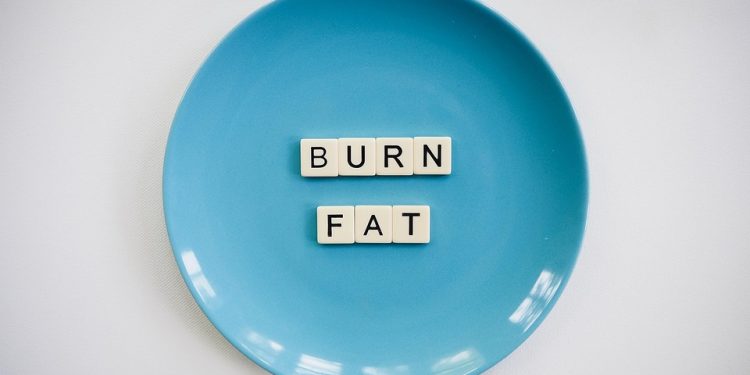Unlocking Your Body’s Potential: A Quick Start Guide to Fat Burning Workouts
Ready to ignite your metabolism and shed unwanted fat? You’ve come to the right place. This guide is designed to provide you with a practical, easy-to-follow roadmap to effective fat burning workouts. We’ll break down the science, offer workout examples, and give you the tools you need to achieve your fitness goals. Let’s get started!
Understanding the Science of Fat Burning
Before diving into specific workouts, it’s crucial to understand how your body burns fat. It’s not simply about sweating or feeling tired; it’s a complex process involving hormones, energy expenditure, and your metabolic rate. Here’s a simplified overview:
- Calorie Deficit: To lose fat, you need to burn more calories than you consume. This forces your body to tap into its fat reserves for energy.
- Metabolic Rate: This is the rate at which your body burns calories at rest. Exercise, especially strength training, can increase your metabolic rate.
- Hormones: Hormones like adrenaline and growth hormone play a role in fat mobilization. Certain types of exercise, like high-intensity interval training (HIIT), can stimulate their release.
- EPOC (Excess Post-exercise Oxygen Consumption): This refers to the “afterburn” effect. HIIT and intense workouts can elevate your metabolism for hours after you’ve finished exercising.
Understanding these principles will help you make informed decisions about your workout routine and diet, maximizing your fat-burning potential.
The Power of Cardio: More Than Just Running
Cardiovascular exercise is a cornerstone of fat burning. While long, slow cardio has its place, incorporating variety is key to preventing plateaus and maximizing calorie burn. Consider these options:
1. High-Intensity Interval Training (HIIT)
HIIT involves short bursts of intense exercise followed by brief recovery periods. This method is incredibly effective for burning calories and boosting your metabolism.
Example HIIT Workout (20 minutes):
- Warm-up (5 minutes): Light cardio, dynamic stretches (arm circles, leg swings).
- Sprint (30 seconds): Give it your all!
- Walk/Jog (60 seconds): Recover.
- Repeat sprints/recovery for 10-12 cycles.
- Cool-down (5 minutes): Static stretches (hold each stretch for 30 seconds).
Benefits of HIIT:
- Burns a significant amount of calories in a short time.
- Increases EPOC, leading to continued calorie burning after your workout.
- Improves cardiovascular fitness.
2. Steady-State Cardio
This involves maintaining a moderate intensity for a sustained period (e.g., jogging, cycling, swimming). While not as intense as HIIT, steady-state cardio is still an excellent way to burn calories and improve cardiovascular health.
Example Steady-State Cardio Workout (30-45 minutes):
- Choose your activity: Jogging, cycling, swimming, elliptical trainer.
- Maintain a moderate intensity: You should be able to hold a conversation, but breathing should be elevated.
- Monitor your heart rate: Aim for 60-70% of your maximum heart rate.
Benefits of Steady-State Cardio:
- Good for building endurance.
- Less demanding on the body than HIIT, making it suitable for beginners.
- Reduces stress and improves mood.
3. Incline Walking or Hiking
Walking or hiking uphill increases the intensity of your workout, engaging more muscles and burning more calories. This is a great low-impact option.
Example Incline Workout (30-45 minutes):
- Find a hill or use a treadmill with an incline.
- Walk at a brisk pace, focusing on engaging your glutes and hamstrings.
- Vary the incline for added challenge.
Benefits of Incline Walking:
- Low impact, making it gentle on your joints.
- Strengthens your glutes, hamstrings, and calves.
- Can be done outdoors, providing fresh air and scenery.
Strength Training: Building Muscle, Burning Fat
While cardio is important, strength training is equally crucial for fat loss. Muscle tissue burns more calories at rest than fat tissue. Building muscle through strength training boosts your metabolism, making it easier to lose fat and keep it off.
Key Strength Training Exercises for Fat Burning
- Squats: A compound exercise that works your quads, glutes, and hamstrings.
- Deadlifts: Another compound exercise that engages nearly every muscle in your body.
- Bench Press: Targets your chest, shoulders, and triceps.
- Overhead Press: Works your shoulders and triceps.
- Rows: Strengthens your back and biceps.
- Lunges: Targets your quads, glutes, and hamstrings, while improving balance.
Example Full-Body Strength Training Workout (30-45 minutes):
- Warm-up (5 minutes): Light cardio, dynamic stretches.
- Squats: 3 sets of 8-12 repetitions.
- Push-ups (or bench press): 3 sets of as many repetitions as possible (AMRAP).
- Rows (dumbbell or barbell): 3 sets of 8-12 repetitions.
- Lunges: 3 sets of 10-12 repetitions per leg.
- Plank: 3 sets, hold for 30-60 seconds.
- Cool-down (5 minutes): Static stretches.
Important Note: If you’re new to strength training, start with lighter weights and focus on proper form. Gradually increase the weight as you get stronger. Consider working with a qualified personal trainer to learn proper technique and prevent injuries.
Combining Cardio and Strength Training: The Ultimate Fat Burning Approach
For optimal fat loss, combine cardio and strength training into your workout routine. Here are a few ways to structure your workouts:
- Alternate Days: Do cardio on one day and strength training on the next.
- Combine in One Session: Perform strength training followed by cardio.
- Circuit Training: Combine strength training exercises with cardio bursts in a circuit format.
Example Weekly Workout Schedule:
- Monday: Strength Training (Full Body)
- Tuesday: HIIT Cardio
- Wednesday: Rest or Active Recovery (e.g., yoga, light stretching)
- Thursday: Strength Training (Full Body)
- Friday: Steady-State Cardio
- Saturday: Rest or Active Recovery
- Sunday: Long Walk or Hike
Remember to listen to your body and adjust your workout schedule as needed. Rest and recovery are essential for muscle repair and overall well-being.
The Importance of Nutrition for Fat Burning
Workouts are only one piece of the puzzle. To truly maximize fat loss, you need to pay attention to your diet. Here are some key nutritional strategies:
- Calorie Deficit: As mentioned earlier, you need to burn more calories than you consume. Use a calorie tracking app or consult with a registered dietitian to determine your calorie needs.
- Prioritize Protein: Protein helps you feel full, preserves muscle mass, and boosts your metabolism. Aim for 0.8-1 gram of protein per pound of body weight.
- Choose Healthy Fats: Healthy fats, such as those found in avocados, nuts, seeds, and olive oil, are essential for hormone production and overall health.
- Limit Processed Foods: Processed foods are often high in calories, unhealthy fats, and added sugars. They can derail your fat loss efforts.
- Stay Hydrated: Drink plenty of water throughout the day to support your metabolism and overall health.
Example Meal Plan (One Day):
- Breakfast: Oatmeal with berries and nuts, protein shake.
- Lunch: Grilled chicken salad with mixed greens, avocado, and olive oil dressing.
- Dinner: Baked salmon with roasted vegetables (broccoli, sweet potatoes).
- Snacks: Greek yogurt, fruit, handful of almonds.
Tracking Your Progress and Staying Motivated
Tracking your progress is essential for staying motivated and making sure you’re on the right track. Here are some ways to monitor your progress:
- Weight: Weigh yourself regularly (e.g., once a week) at the same time of day.
- Measurements: Take measurements of your waist, hips, and thighs.
- Photos: Take progress photos every few weeks to visually track your changes.
- Workout Log: Keep a record of your workouts, including the exercises, sets, repetitions, and weights you used.
- How You Feel: Pay attention to how you feel physically and mentally. Are you feeling stronger, more energetic, and more confident?
Tips for Staying Motivated:
- Set Realistic Goals: Don’t try to lose too much weight too quickly. Aim for a gradual and sustainable rate of fat loss (e.g., 1-2 pounds per week).
- Find an Accountability Partner: Workout with a friend or family member to stay motivated and accountable.
- Reward Yourself: Set small, non-food-related rewards for reaching your goals (e.g., a new workout outfit, a massage).
- Celebrate Your Successes: Acknowledge and celebrate your progress along the way.
- Don’t Give Up: There will be days when you don’t feel like working out or eating healthy. Don’t let these setbacks derail you. Just get back on track as soon as possible.
Conclusion
Losing fat and achieving a healthier body is a journey, not a destination. By combining effective workouts with a balanced diet and consistent effort, you can unlock your body’s potential and achieve your fitness goals. Remember to be patient, persistent, and listen to your body. Embrace the process, celebrate your successes, and never give up on yourself. You’ve got this!
FAQs: Your Burning Questions Answered
Here are some frequently asked questions about fat burning workouts:
Q: How often should I work out to burn fat?
A: Aim for at least 3-5 workouts per week, combining cardio and strength training. Consistency is key.
Q: What’s the best time of day to work out for fat loss?
A: There’s no magic time. The best time is when you can consistently fit it into your schedule. Some studies suggest that working out in the morning on an empty stomach may enhance fat burning, but this isn’t universally true.
Q: Can I target fat loss in specific areas of my body (e.g., belly fat)?
A: Unfortunately, you can’t spot reduce fat. Fat loss occurs throughout your body. However, certain exercises can help tone and strengthen specific muscle groups.
Q: How long does it take to see results from fat burning workouts?
A: It varies from person to person, but you can typically start to see noticeable changes in your body composition within 4-8 weeks of consistent effort.
Q: Is it okay to eat before or after a workout?
A: Yes! Eating a pre-workout meal or snack can provide you with energy for your workout. Eating a post-workout meal or snack helps replenish your glycogen stores and repair muscle tissue. Choose easily digestible carbohydrates and protein.
Q: What if I’m not losing weight despite working out and eating healthy?
A: There could be several factors at play, such as:
- Calorie Intake: Make sure you’re accurately tracking your calories and are truly in a deficit.
- Underlying Medical Conditions: Certain medical conditions (e.g., thyroid problems) can affect your metabolism. Consult with your doctor.
- Stress: High stress levels can lead to increased cortisol production, which can hinder fat loss.
- Sleep: Lack of sleep can disrupt your hormones and make it harder to lose weight.
- Plateau: Your body may have adapted to your current routine. Try changing up your workouts or adjusting your calorie intake.
Q: Are supplements necessary for fat burning?
A: Supplements are not essential for fat loss. A healthy diet and consistent exercise are the most important factors. However, some supplements, such as caffeine and creatine, may provide a small boost to your performance. Always consult with your doctor before taking any new supplements.
Q: What’s the best type of cardio for burning fat?
A: The “best” type is the one you enjoy and can consistently do. HIIT is generally considered more effective for burning calories in a shorter amount of time, but steady-state cardio is still a valuable tool.












